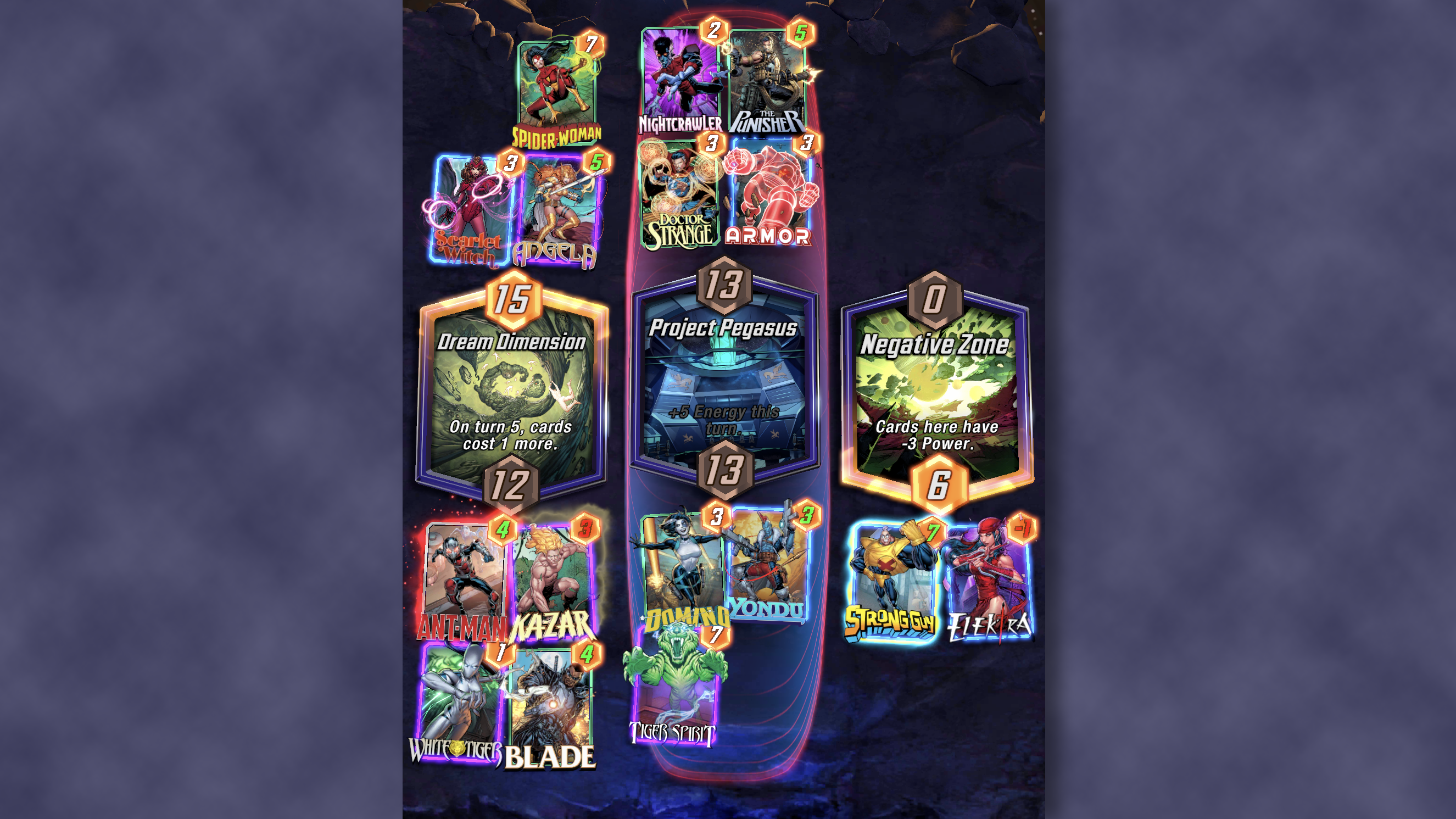Marvel Snap tiebreakers: how a winner is decided when there's a draw
Here's what happens when you tie at one or more locations in Marvel Snap.

Marvel Snap's three-lane power struggle is surprisingly complex for how svelte it is, and although I wish it weren't phone-sized on PC, the interface does a good job of communicating who won and why. The one exception is when there's a tie. If each player's power level is the same at one location and they split the other two, the game is resolved with a tiebreaker that results in a victory or loss without explanation. And very rarely, there's no winner at all. What's going on?
How tiebreakers work in Marvel Snap
The rule for ties in Marvel Snap is simple: When players tie one or more locations, their power level across all locations is totaled. Highest total power level wins.
Since each player has the same power level at tied locations, they don't make a difference in determining a winner, so to predict the outcome of a tiebreaker you just have to add up the power levels at the non-tied locations. Whoever's power levels at those locations add up to the biggest number wins.
In the image at the top of this article, the middle location is tied. Adding up each player's power levels at the other locations, the top player has 15 (15 and 0) and the bottom player has 18 (12 and 6), so the bottom player wins. (That's me—woo.)
In rare instances, players tie one location and split the others, but have the same total power level (eg, 5-5, 5-10, 10-5). If that happens, the game ends in a tie and no one's rank improves. That's only happened to me once. In theory (it's never happened to me), a game can also end with two locations tied, or all three locations tied. In the first instance, the player who won the third location would win, since they'd have the higher total power (eg, 5-5, 5-5, 10-5). In the second instance, there'd be no winner since the players again have identical power levels (eg, 5-5, 5-5, 5-5).
Knowing that tiebreakers involve total power level, you can avoid one error: not playing cards you could play because they won't win you a location. Instead, you should dump all the power you can onto the board, because your power level in locations you ultimately lose may turn out to matter in a tiebreak. In short, if you can play a card that increases your total power level, do it.
Mainly, it's just nice to know what the heck is happening when there's a draw. It'd be cool if there were some sort of tiebreak animation showing what's going on, although maybe there's an argument for not slowing things down.
The biggest gaming news, reviews and hardware deals
Keep up to date with the most important stories and the best deals, as picked by the PC Gamer team.
For the Steam version of Marvel Snap, which currently has the early access label, a much bigger UI change is on the to-do list: Right now, it duplicates the vertical format of the mobile version, but the full PC release will include "a UI experience developed specifically for PC" with "a fullscreen landscape display of the game," according to the devs.

Tyler grew up in Silicon Valley during the '80s and '90s, playing games like Zork and Arkanoid on early PCs. He was later captivated by Myst, SimCity, Civilization, Command & Conquer, all the shooters they call "boomer shooters" now, and PS1 classic Bushido Blade (that's right: he had Bleem!). Tyler joined PC Gamer in 2011, and today he's focused on the site's news coverage. His hobbies include amateur boxing and adding to his 1,200-plus hours in Rocket League.

